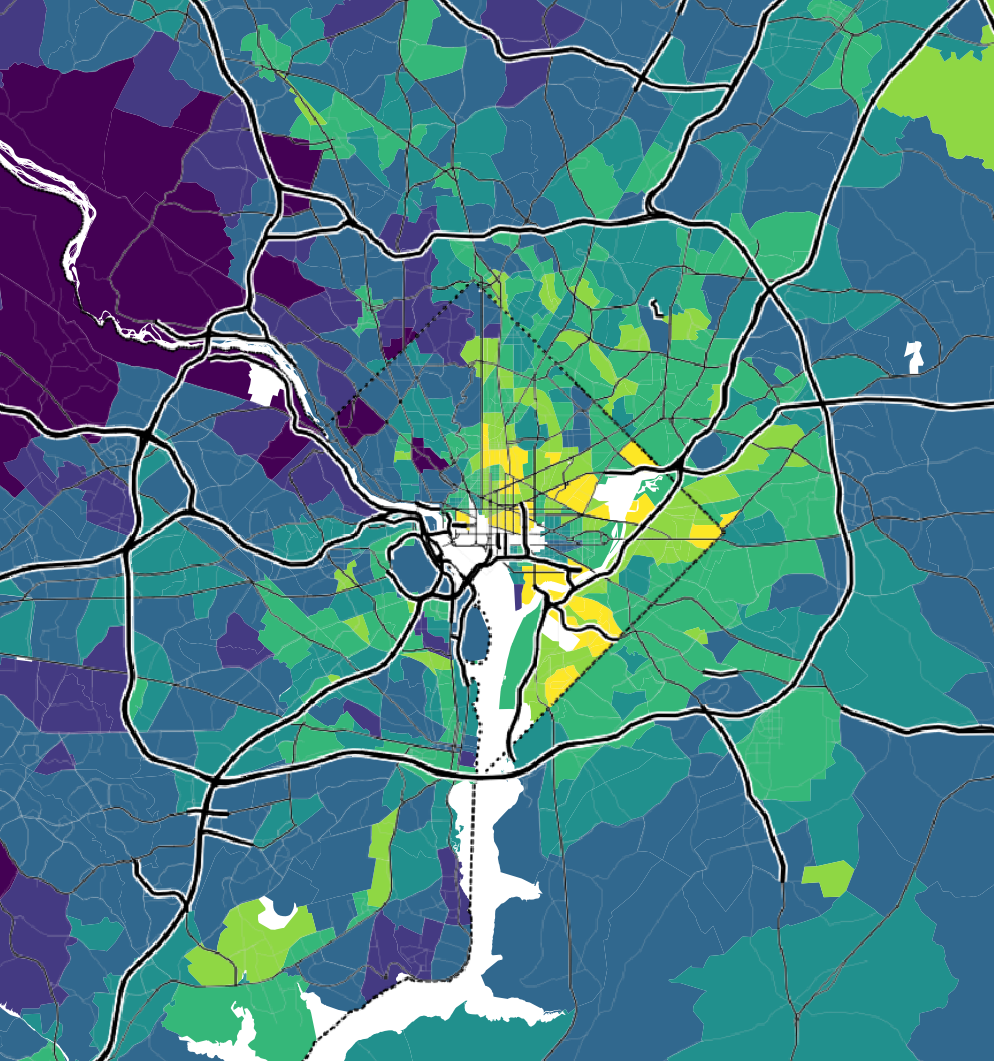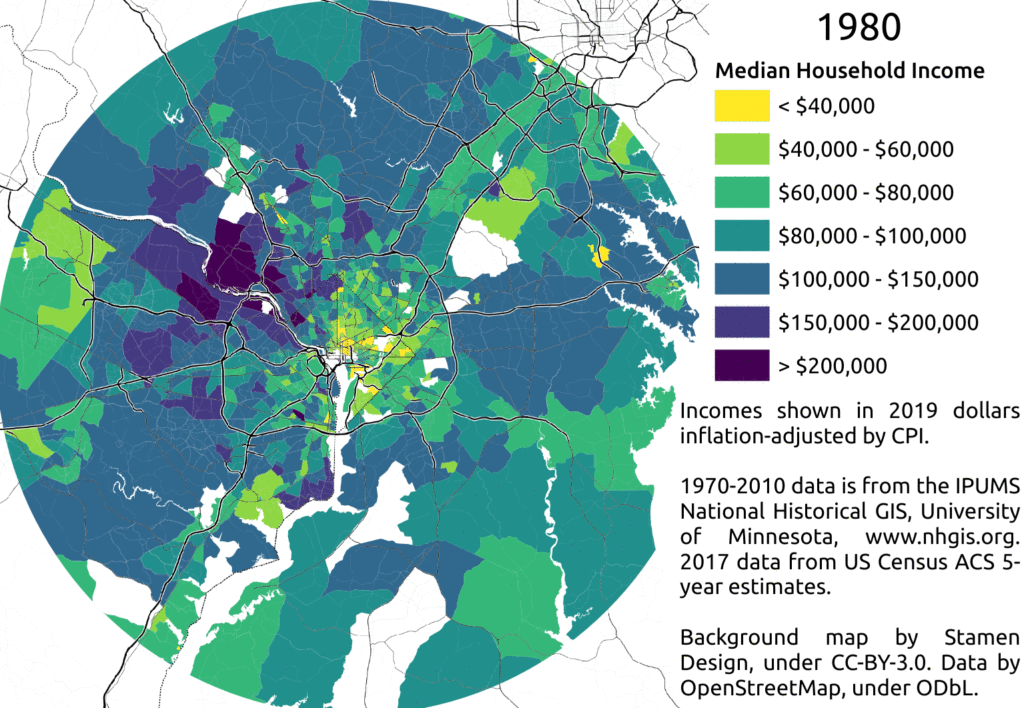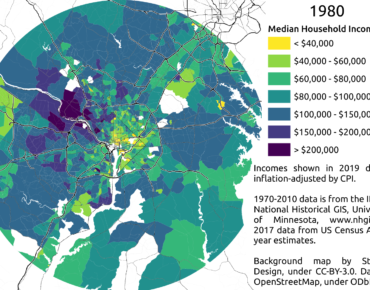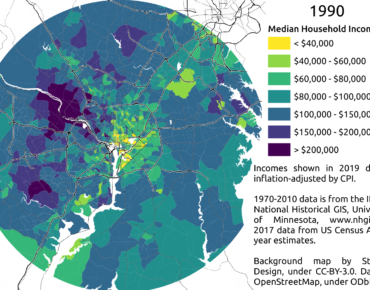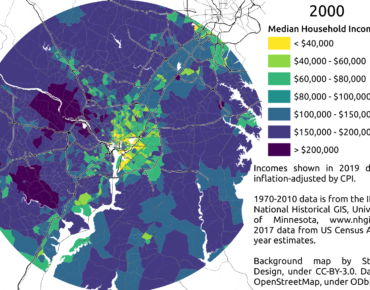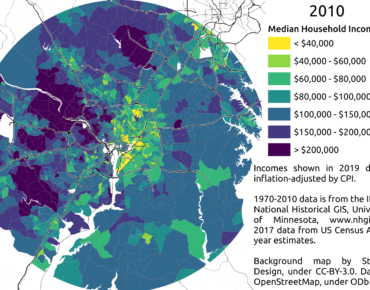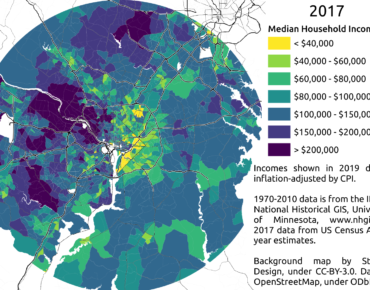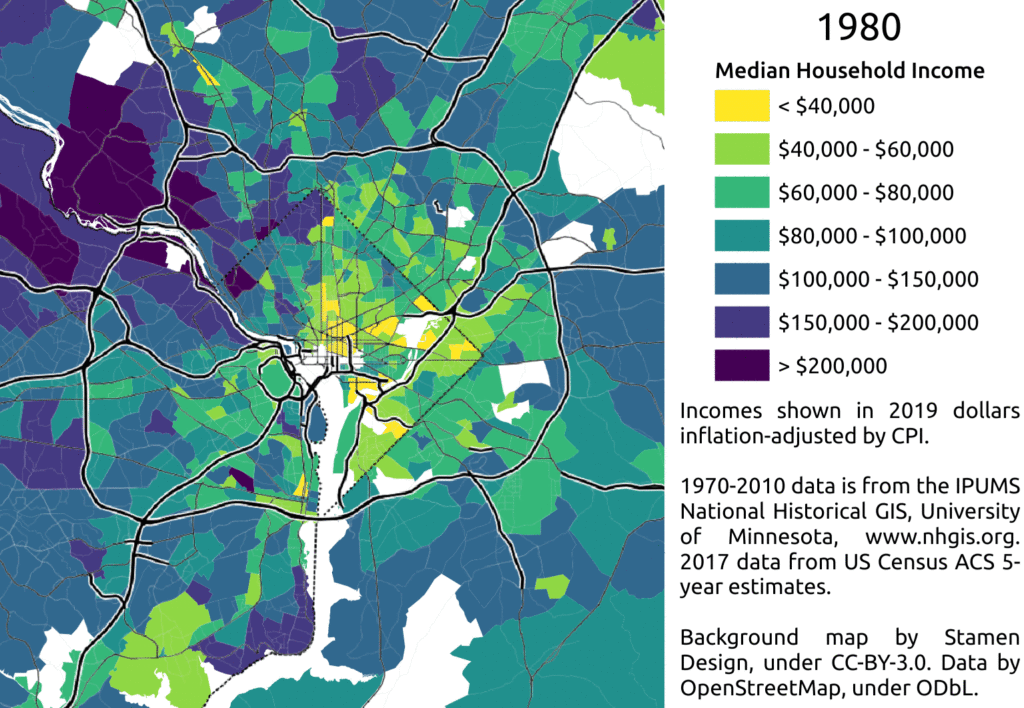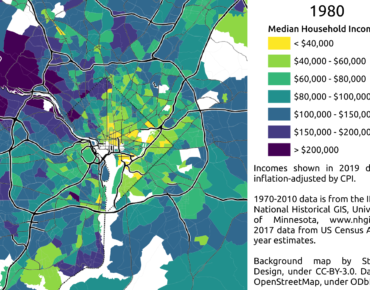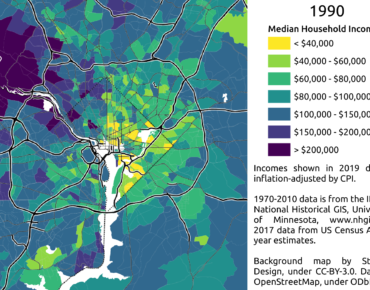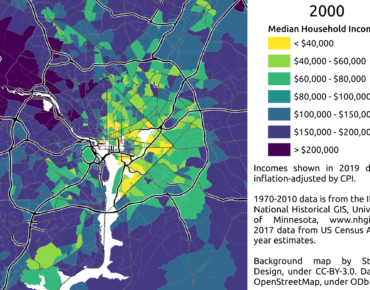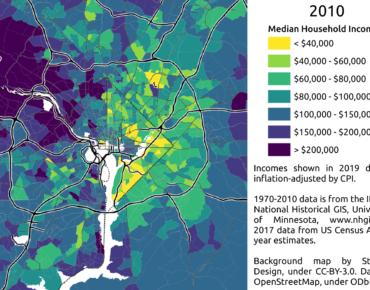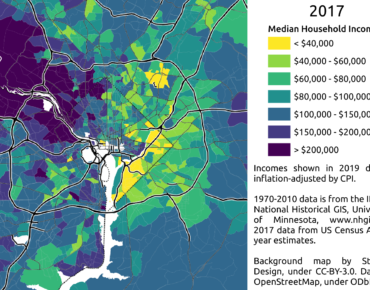Although the spatial distribution of wealth in the D.C. area has remained relatively constant over the past 40 years, with the richest neighborhoods stretching to the northwest on both banks of the Potomac and the poorest neighborhoods inside the Beltway east of 16th Street NW, the number of very rich and very poor neighborhoods has increased.
How the distribution of household incomes in the Washington region has changed since 1980
Using data from the 1980 through 2010 Censuses provided by the IPUMS National Historical GIS project at the University of Minnesota and 2017 data from the U.S. Census Bureau’s American Community Survey, I created maps of the median household income in inflation-adjusted 2019 dollars for each census tract within 50 kilometers of the U.S. Capitol.
The resulting maps show that the region’s east-west economic divide was already becoming established in 1980, with the richest census tracts along the Potomac in Potomac, Maryland and Great Falls, Virginia. Outside the corridor along the Potomac, there was a general tendency for census tracts outside the Beltway to be richer than those inside it, but the poorest tracts, with median household incomes below $40,000 in 2019 dollars, were nearly all concentrated inside the District itself, and east of 16th Street NW.
How the distribution of household incomes in the Washington region has changed since 1980
The median household income in inflation-adjusted 2019 dollars for each census tract within 50 kilometers of the U.S. Capitol.
- 1980
- 1990
- 2000
- 2010
- 2017
By the 2000 Census, the corridor of wealth along the Potomac had been joined by a second area with median household incomes above $200,000 in 2019 dollars in southwestern Fairfax County. Meanwhile, Northern Virginia suburbs inside the Beltway—except for those along the I-395 corridor—were about as wealthy as those outside it. On the other hand, while D.C. west of 16th Street and the Maryland suburbs outside the Beltway were largely as wealthy as Northern Virginia, the area inside the Beltway and east of 16th Street was home to most of the region’s poorer neighborhoods.
Between 2000 and 2017, the most notable change in the maps is that, as most of D.C. between Rock Creek and the Anacostia gentrified, the region’s poorest neighborhoods almost all became concentrated east of the Anacostia River. (The concentration of neighborhoods with low median incomes in the vicinity of College Park is an artifact due to the large number of college students living in the area.)
Within the Beltway, households have become increasingly concentrated by income since 1980
- 1980
- 1990
- 2000
- 2010
- 2017
About the data
The analysis and maps in this article are based on data from decennial censuses accessed through the IPUMS National Historical Geographic Information System (NHGIS) project at the University of Minnesota. Although the U.S. Census Bureau’s online data portal only provides relatively recent data, NHGIS has digitized a large amount of older data from decennial censuses going back at least to the start of the 20th century. However, the median household income data I used for these maps is only available starting with the 1980 Census.
Using the NHGIS data from the 1980 through 2010 Decennial Censuses and adjusting for inflation with the Bureau of Labor Statistics Consumer Price Index Inflation Calculator, I mapped the median household income for each census tract in the District of Columbia; Prince George’s, Montgomery, Charles, Calvert, Anne Arundel, and Howard Counties in Maryland; and Arlington County, the City of Alexandria, Fairfax County, the City of Falls Church, the City of Fairfax, the City of Manassas, the City of Manassas Park, Prince William County, and Loudon County in Virginia. I then cropped the resulting maps to a circle 50 kilometer in radius centered on the U.S. Capitol.
Previously: How the D.C. area’s population density has changed since 1970
Feature image: Regional household incomes in 1990. Image by DW Rowlands.
DW Rowlands is a human geography grad student and Prince George’s County native, currently living in College Park. More of their writing on transportation-related and other topics can be found on their website. They also write for Greater Greater Washington, where they are on the Elections Committee. In their spare time, they volunteer for Prince George’s Advocates for Community-Based Transit. However, the views expressed here are their own.
